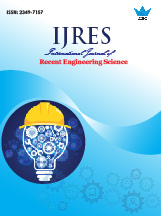Plasmonics: A New Generation of Technology at Nano Scale: A Review
 |
International Journal of Recent Engineering Science (IJRES) |  |
| © 2016 by IJRES Journal | ||
| Volume-3 Issue-1 |
||
| Year of Publication : 2016 | ||
| Authors : Mukesh R. Chaurasia |
||
| DOI : 10.14445/23497157/IJRES-V3I1P105 |
How to Cite?
Mukesh R. Chaurasia, "Plasmonics: A New Generation of Technology at Nano Scale: A Review," International Journal of Recent Engineering Science, vol. 3, no. 1, pp. 30-32, 2016. Crossref, https://doi.org/10.14445/23497157/IJRES-V3I1P105
Abstract
The electronic industry was revolutionized by an observation made by Gordon Moore in 1965. He predicted that the number of transistors per square inch on the integrated circuits is going to double every 18 month. But he did not predicted about the interconnection between those transistors and the time delay associated with each of the active devices on the integrated circuits, there is always some time delay between the application of input signal and the outcome of the output pulse, associated with each of the active devices also known as the transition time. As the number on the transistor on the chip is going to increase the time delay will increase and today’s advanced microprocessor uses ultrafast transistors with dimensions of the order 50 nm, but the performance is becoming rather limited when digital information need to be send from one point to another. This is the critical problem in the near future to be think upon and to look for the better alternative.
Keywords
selectrical size, plasmons, nano particles
Reference
[1] Chiang, T,-Y., et al., impact of joule heatingon scaling of deep sub-micron Cu/low-K interconnects. IEEE Symp. VLSI Circuits, Dig. Tech Papers,38, 2002. [2] M. J. Kobrinsky et al., Intel technology, J, 8, 2004.
[3] Bohr, M. T., Tech. Dig. IEDM, 241, 1995.
[4] Chen G., et al, prediction of CMOS compatible on-chip optical interconnect, int, Workshop System level interconnect, prediction, 2005.
[5] M. Born, E Wolf, Principle of optics, Cambridge university press, Cambridge 1999.
[6] H. Raether, Surface Plasmons on Smooth and Rough Surfaces and on Gratings, Springer, 1988.
[7] W. L. Barnes, A. Dereux, T. W. Ebbesen, Nature 424, 824, 2004.
[8] S. A. Maier, H. A. Atwater, J. Applied physics, 98, 011101, 2005.
[9] P. Berini, R.Charbonneau, N. Lahoud, G. Mattiussi, J. Applied Physics. 98, 043109, 2005.
[10] Crozier, K. B., et al., J. Applied Physics, 94, 4632, 2003.
[11] Nie, S. M., and Emery, S. R., Science 275, 1102, 1997.
[12] Kneipp, K., et al., Phys. Rev. Lett. 78, 1667, 1997.
[13] R. Zia, J. A. Schuller, A. Chandran, M. L. Brongersma, Plasmonics: the next chip-level technology, July-August, 2006.
[14] T.W. Ebbesen, C.Genet,and S. I. Bozhevolnyi, SurfacePlasmon circuitry, Phys. Today 61(5),44–50 (2008).
[15] Brongersma, Mark. Are Plasmonics Circuitry Wave of Future?Stanford School of Engineering. N.p., n.d. Web. 26 Nov. 2014.
[16] Naik, G.V. et al, Opt. Mater. Express, 2011. 1(6): p. 1090- 1099.
[17] Vakil, A. &Engheta, N. Science, 2011. 332(6035): pp. 1291- 1294. [18] Ozbay, E. Plasmonics: Merging Photonics and Electronics at Nano scale Dimensions. Science 311.5758 (2006): 189-93. Web.
